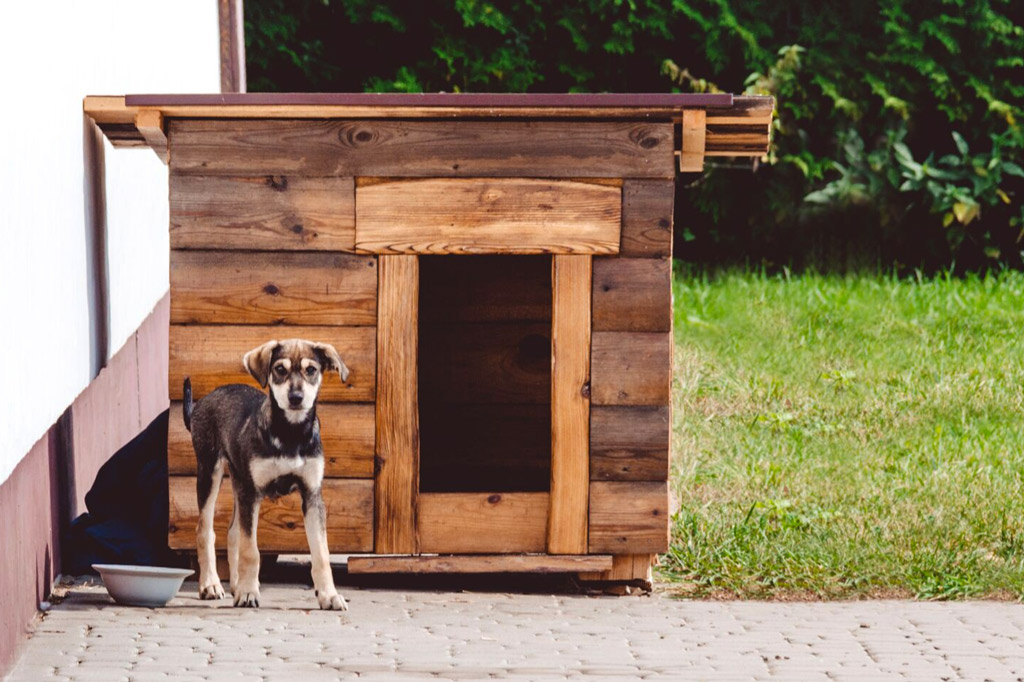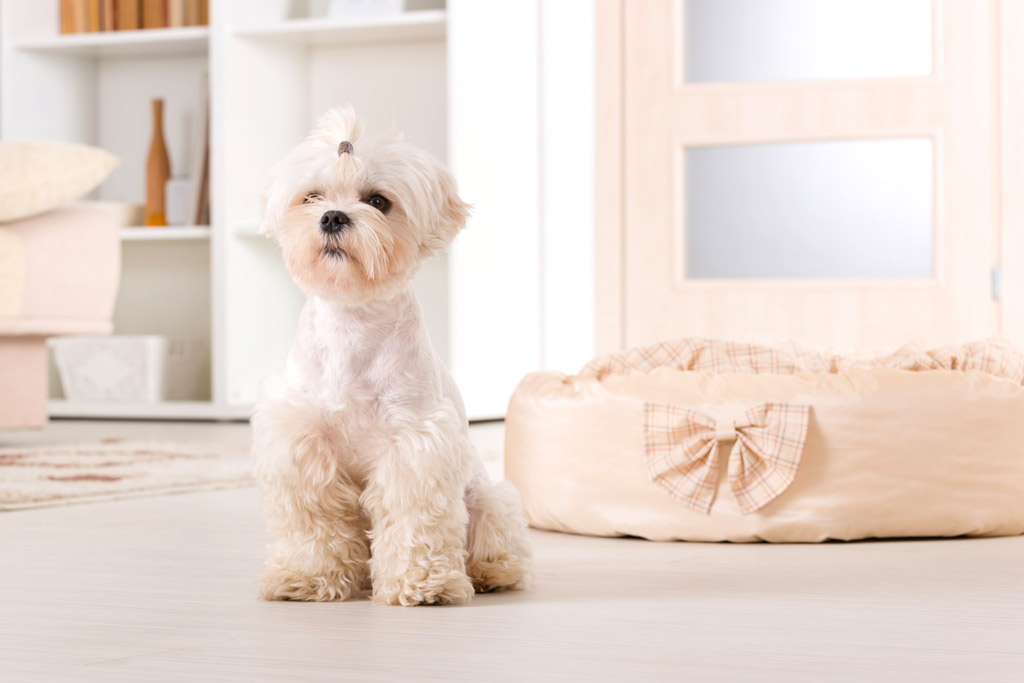
Apart from a cosy bed where your furry friend gets to sleep, preparing a designated comfort zone where your pooch can retreat to when she needs a break from all that’s going on and to feel relaxed, makes a big difference.
So, how can I create a dog safe zone? Follow these steps to create a dog safe zone at home (watch our quick tutorial):
Continue reading to find out what makes each step important and what you should consider, especially when bringing your pup home for the first time, from the breeders or a shelter.
Craft the Ultimate Dog Safe Zone
A dog safe zone isn’t hard to create, but it does require some thought. You want to make sure that your dog’s spot is safe and comfortable for her inquisitive nose and playful manners.
Providing your pooch with a cosy and quiet place where she can retreat to (at all times) is very important for many reasons:
- Free access: It’s accessible at all times for your pooch. Restraining your furry friend in a crate or a locked playpen for multiple hours a day will make her feel stressed and unloved.
- As your dog’s resting spot: This is where your pup can retreat to rest or have a short nap.
- As your pup’s quiet area: A spot where they cannot get disturbed when the household gets busy.
- As your pooch’s safe zone: Also, dogs who have anxiety or fears find it comforting to be able to retreat to a space that’s their own and where they feel safe. By providing your dog with the choice to leave when needed, you increase her confidence in dealing with stressful situations (such as thunderstorms, fireworks, holiday parties, new baby, visitors/strangers, etc.)
If you have kids, your dog’s safe zone is a tool to teach your children boundaries when they interact with the family dog.
When the dog is in her zone, she should be left alone, no petting or playing allowed. This rule can help prevent bite incidents.
Let’s find out how to create this dog safe zone!
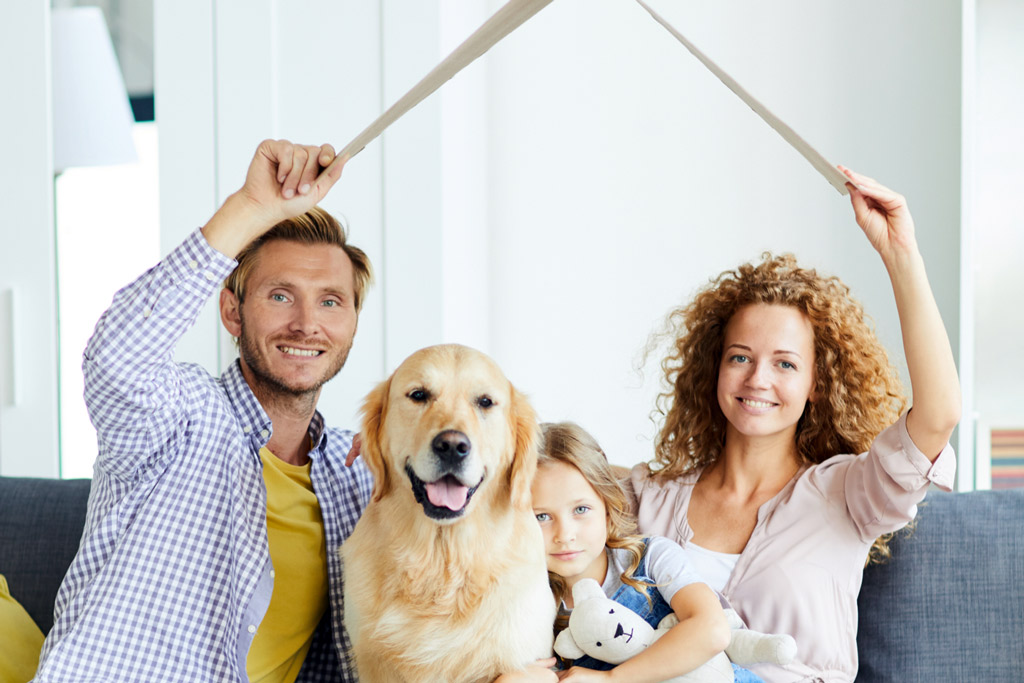
#1 – Choose the Space
First of all, consider where you have room to create a permanent area just for your dog. Think of it as an extended crate or sleeping area. The goal is that your pooch sees this zone as the BEST PLACE ever!
This will depend on the design of your home. But here are some helpful guidelines to choose such a space:
| ❐ Choose a space that your dog will be able to access at all times. |
| ❐ Consider a quieter area in your house so your dog can rest (also helps if you have a nervous doggy). It’s best to avoid the living room or kitchen. |
| ❐ Take into account your dog’s size. A dog safe zone doesn’t have to be huge. Usually, dogs prefer smaller spaces that are quiet, comfortable, and enclosed, which reminds them of their ancestral dens. |
| ❐ Contemplate restricting your dog’s access to the rest of the house to prevent unwanted behaviours like chewing, barking, and potty accidents. |
| ❐ Look at a space with the least safety hazards to be removed (such as cables, plants, curtain cords, breakable items, etc.) |
| ❐ Favour your dog’s preferences and cater her quirks 😉 Where does she like to go for rest? Has she shown any interest in a particular corner? |
Here are some ideas:
- You can install a dog den under the stairs.
- In the hallway, using baby gates to prevent your pooch from going upstairs and accessing the front door (my choice, since we have a wide hallway that also gets natural light when needed).
- A built-in closet that can be transformed into a doggy home.
- A large walk-in closet or storage room.
- The laundry room, if your dog is ok with the sound.
- For those of you who have free space, a spare bedroom could do.
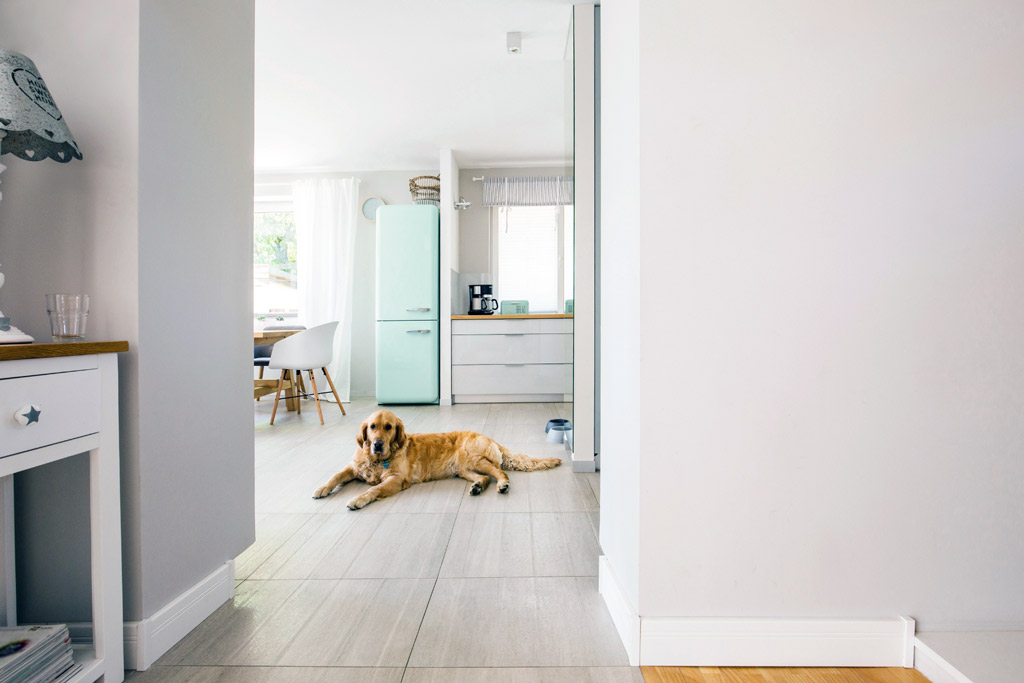
#2 – Make it Safe
Next, you need to make sure that your dog’s haven is safe and toxin-free. Especially before bringing your pooch home, it’s best to dog-proof your house.
Even if you already have a dog-friendly home, you might need to make some changes when creating your dog’s safe zone.
Here’s how to dog-proof your dog’s space and the surrounding areas:
- Hide all the cables behind furniture or tape them down.
- Dog-proof your home with cabinet locks, to keep cleaning products and food locked away.
- Remove trash cans, or replace them with dog-proof models like this touch-free stainless steel trash can.
- Keep bathroom and bedroom doors closed.
- Be careful with the cords of your curtains.
- Keep toxic items out of your dog’s reach — medications, plants, people food, cleaning products, pesticides, and fertilizers.
- Put away shoes, clothing, kids’ toys, or anything else you wouldn’t want your dog playing with (or putting in their mouth) while you aren’t around.
- If your dog’s safe space is under a desk or counter, make sure that she has enough clearance to get in and out without hitting herself or knocking anything over.
P.S. Get the full guide with a room-by-room checklist at our How to Make Your Home Dog-Friendly and Safe blog post.
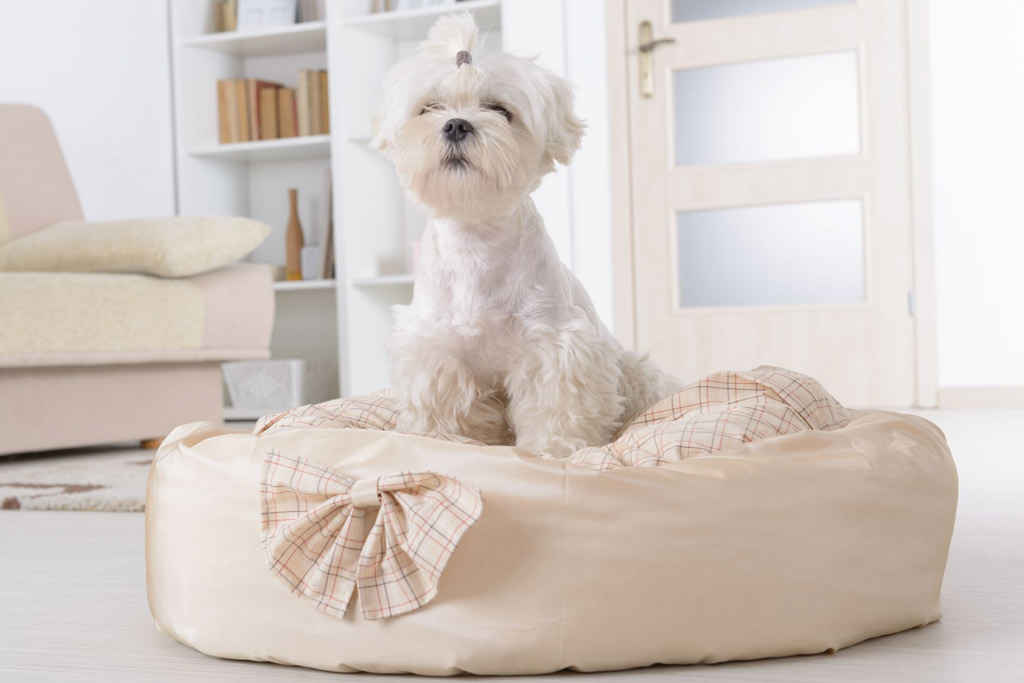
#3 – Make it Comfortable
After making it safe, it’s time to consider your dog’s needs and make it comfortable for you and your pooch, at the same time.
How can you make your dog’s safe zone comfy?
The temperature should be cool in the summer and warm in the winter. Dogs can overheat during hot weather, tiled floors or a ceiling fan can keep them cool, for instance. During cold weather, a blanket and the house heating system should be enough.
What does your pooch need?
- A bed.
- A crate (optional).
- A playpen (optional).
- Some toys.
- A feeding bowl.
- A water bowl.
For some ideas, have a look at dog beds and other basic needs at my Dog Safe Zone Kit list on Amazon.
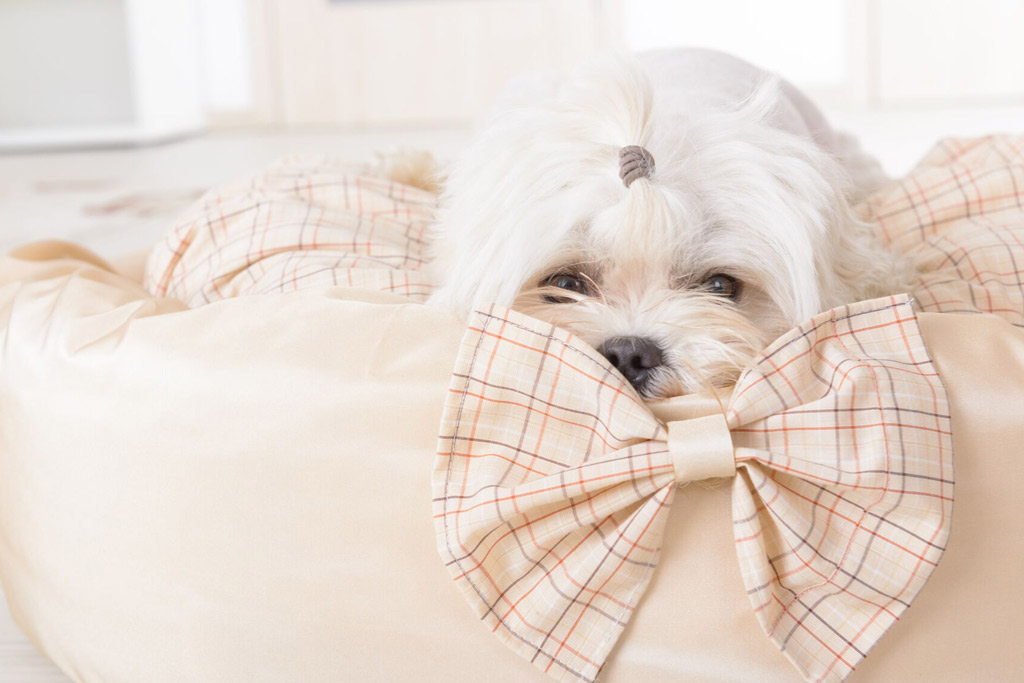
A Comfortable Bed
Dogs spend more than half of the day sleeping, so comfort counts!
With all that sleeping, your dog’s needs a resting place that is cosy and where she feels safe. So, make your dog’s bed the focal point of your doggy zone.
Even if your dog is allowed on the sofa or/and your bed, she also needs her own bed!
Types of dog beds:
- Soft bed: It can have a round or rectangular shape and bolstered pads all around for dogs to lean their head.
- Cushion bed: A soft and flat bed with no bolster.
- Sofa bed: Rectangular bed with a bolster or headrest on three sides.
- Cave bed: Great for dog breeds that like burrowing, like Boston Terriers and Dachshunds.
- Heated bed: This is a flat bed with an electric or insulating layer ideal for dogs who love warmth. It feels good even in the summertime because dogs will often seek a spot in the sun to rest. Alternatively, you can place a dog bed warmer inside your pup’s bed!
- Cooling bed: There are a lot of breeds that are surprisingly prone to overheating (like Brachycephalic breeds – Pugs, French Bulldogs, Boston Terriers, etc.) despite their lack of huge coats of fur. You can make their lives a lot easier in the summer with a cooling bed.
- Orthopaedic dog bed: Consider your dog’s specific needs when picking out a dog bed. If your dog has arthritis problems, for example, a soft bed with low edges is easy to get in and out. Also, the memory foam ensures better support and rest for weary joints. This water-resistant orthopaedic bed is perfect for senior dogs.
- Dog house: An indoor dog house, which has a ceiling and multiple entry points, ideal for small dogs.
- Dog tent: Another alternative if you want a ceiling over your dog’s head when sleeping for extra cosiness and blocking the light.
Check my favourite dog beds page to find the right bed for your dog according to size and special needs. There I go deeper into bed features and which bed is best for who. 😉
Does your pooch need extra cosiness and comfort?
Add a doggy blanket (Amazon link) for burrowing and extra warmth, and one of your own old t-shirts with your scent (because they never can get enough of you ;)).
Finally, if your dog is going to be sleeping with you, consider using a bed raiser to provide more room at the feet of your bed. There are dog stairs or steps if your pooch has trouble reaching your bed or even your sofa!
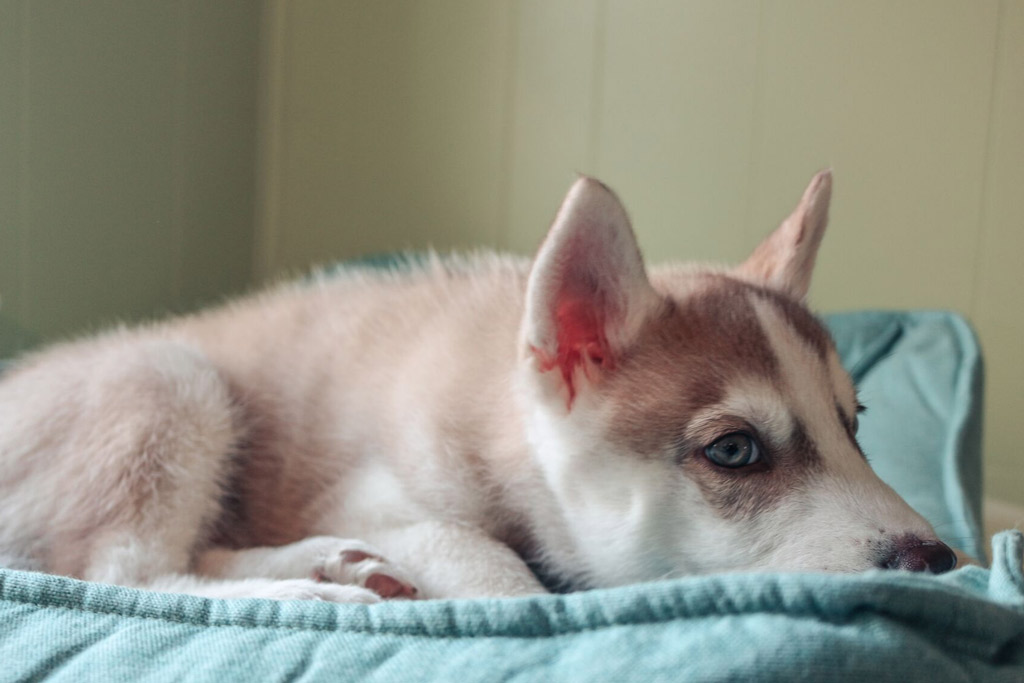
A Fitting Crate
Crate training should be considered as part of house-training your puppy; your dog could sleep in her crate at night and take naps in it throughout the day. This will help your puppy learn to stay in a restricted area by herself and feel good about it.
The ultimate goal of crate training is that your pooch goes into this area on her own, and also when you give her a verbal cue, as opposed to needing to be shoved or coaxed in when you’re leaving or as a punishment.
Your pooch should always think of her crate as a safe haven. This is easy to know as once your pup is in, she remains relaxed, comfortable and quiet.
For making your dog’s crate comfortable:
- Place her bed inside.
- Add a blanket if it gets cold.
- If your dog suffers from anxiety, leave an old T-shirt with your smell.
- Set up a crate cover to drape over the top and back of the space. This is especially good for nervous dogs and helps to create a den-like environment. But make sure to keep the cover away from the entrance to the crate.
When getting a dog crate:
- Get a crate that will fit your dog when she grows up. You can add a crate divider to limit the space whilst your pup is still growing.
- Also, measure your dog safe space, to make sure it fits there.
- Get one with a removable plastic floor pan that you can easily clean, especially useful for the potty accidents that might occur at the beginning of the crate training process.
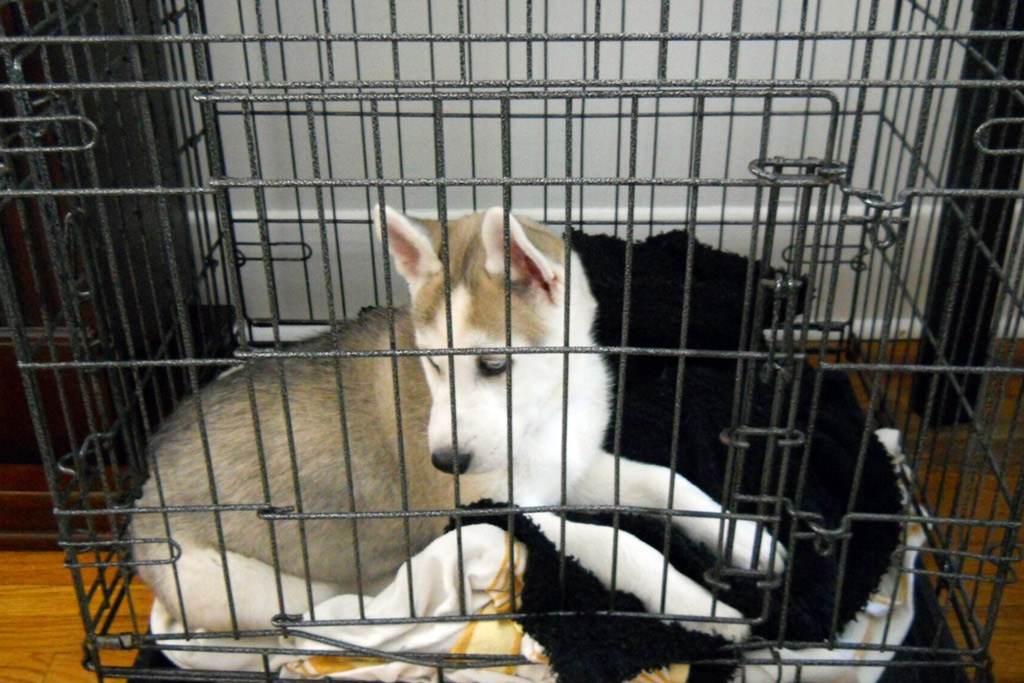
A Foldable Playpen
Playpens come in handy when you live in a small apartment or/and open-plan space. A sturdy and foldable playpen creates an enclosed dog space accessible by a gate or door.
Alternatively, a wall fixed baby gate or an adaptable barrier can also provide a secure boundary. Also, portable playpens can be useful if you want to put it away and of sight when you are home or to take with you on holidays.
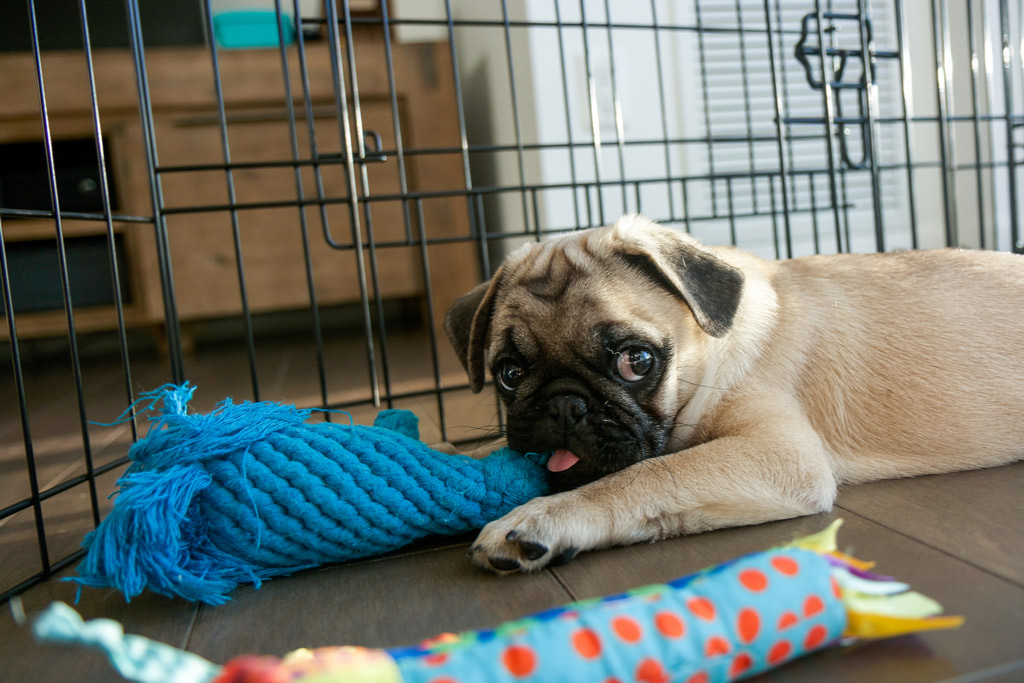
A Water Bowl
Keep water accessible at all times and change your dog’s water daily to keep it fresh and clean.
You can place a water bowl in or near your dog’s safe zone. If your pooch is a bit messy when she slurps water or drools a fair bit, consider a spill-proof water bowl instead or place an absorbent mat underneath her bowl.
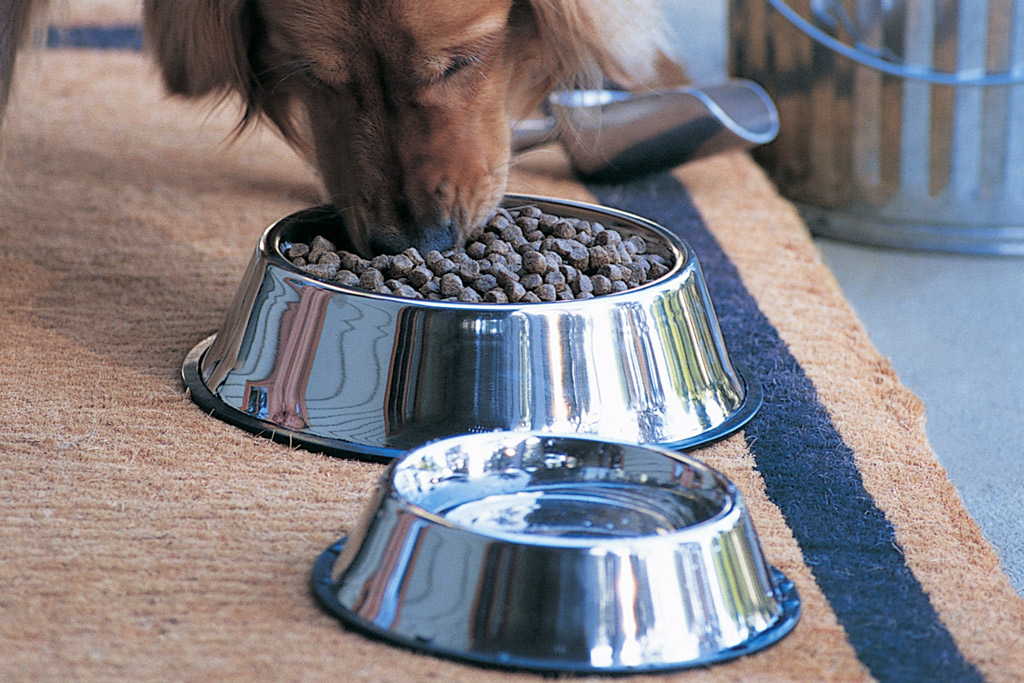
A Feeding Bowl
Establish a feeding area in your dog’s safe space where you can place your dog’s bowls for food and water.
This also reinforces the positive association that your pup has with her area. Plus, it provides a stress-free mealtime away from the household hustle and bustle.
Setting a feeding area can help prevent food guarding behaviour and possible incidents for you and the children in your family. Ideally, your dog’s trust towards you permits you to grab her bowl anytime or interrupt her meal if needed without consequences.
You probably want to remove the food bowl after your doggy finishes eating, so you have some control over the feeding schedule. But, always keep a water bowl around a corner so your furry friend always has fresh water available.
There are some innovative solutions such as a pull-out panel or draw that houses dog bowls.
However, there are more affordable dog food bowl solutions that work very well to keep the feeding area neat and comfortable for your dog’s height.
P.S. In my Dog Safe Zone Kit list on Amazon, you’ll find ideas for dog beds and other basic needs that you can browse through.
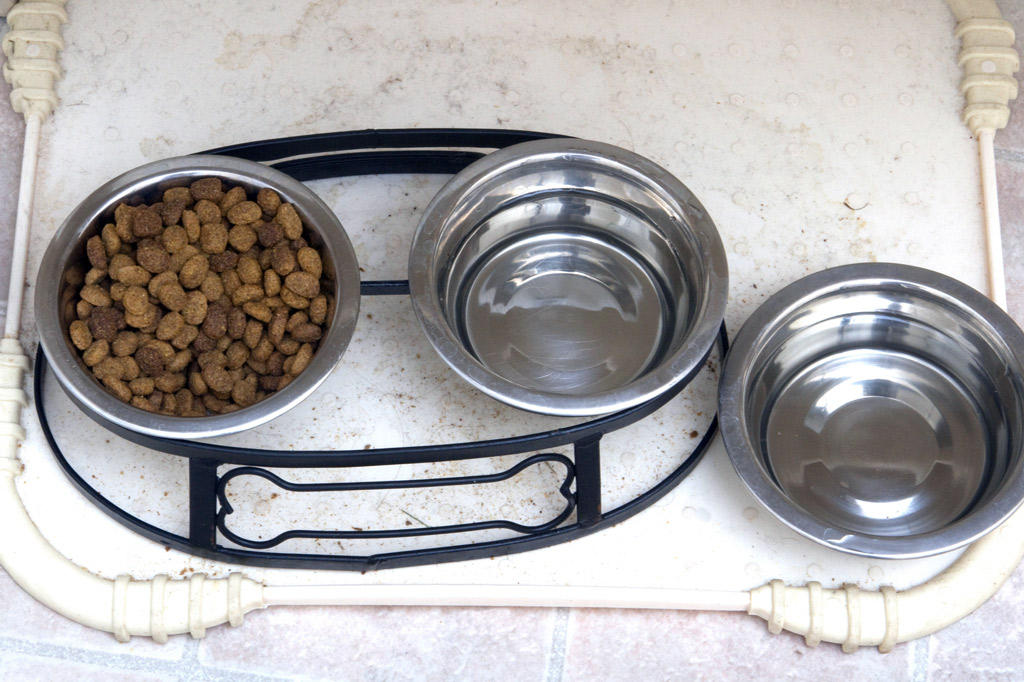
Lasting and Stimulating Toys
When it comes to toys, I am an advocate for tidying up dog toys after playing for many reasons:
- It helps your dog to identify when it’s playtime and when it’s not.
- Dogs get bored with toys that they have access to at all times. Instead, when stored away, your dog will view her toys as an exclusive item.
- It can be a hazard if they are in just laying around and in the way.
- Squeaky toys produce loud noises and you probably want to avoid that during the night, for example.
- Your dog and kid(s) can exchange their toys by mistake or on purpose (the other toy always look more fun from either’s perspective!)
- Because I like to be able to teach my dog the cool trick of tidy up (#6) after playing!
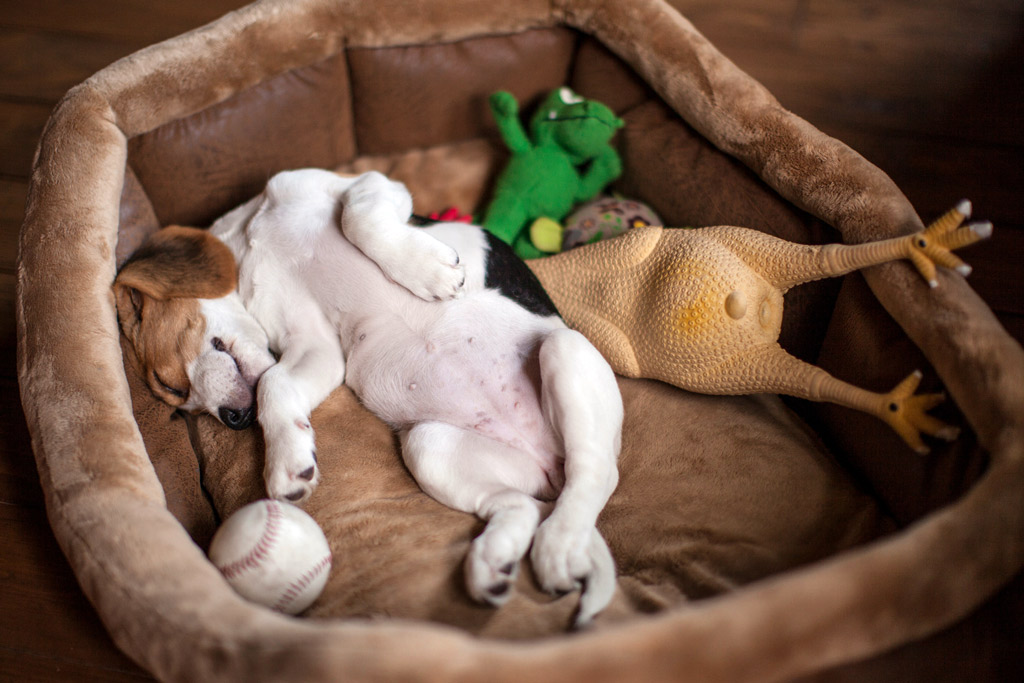
However, there are some toys and some occasions when I like to leave toys laying in the safe zone.
Interactive toys help with your dog’s mental stimulation and some plush toys like Smart Pet Love Snuggle Puppy Behavioral Aid Toy provide emotional comfort.
These interactive toys are a great addition to your dog room:
- Dispenser toys: Kongs (Amazon link) are a classic option in this range. It comes in all sizes and for all ages. You can fill it with kibble or treats. Also, you can freeze it for an extra challenge.
- A seek-a-treat puzzle: A Snuffle Mat (Amazon link) challenges your dog to use their nose and paws to find the treats.
- A treat ball toy: It gives your pooch something fun to chase around the room and surprise her with a tasty reward!
All these toys are a great option to leave around in your absence.
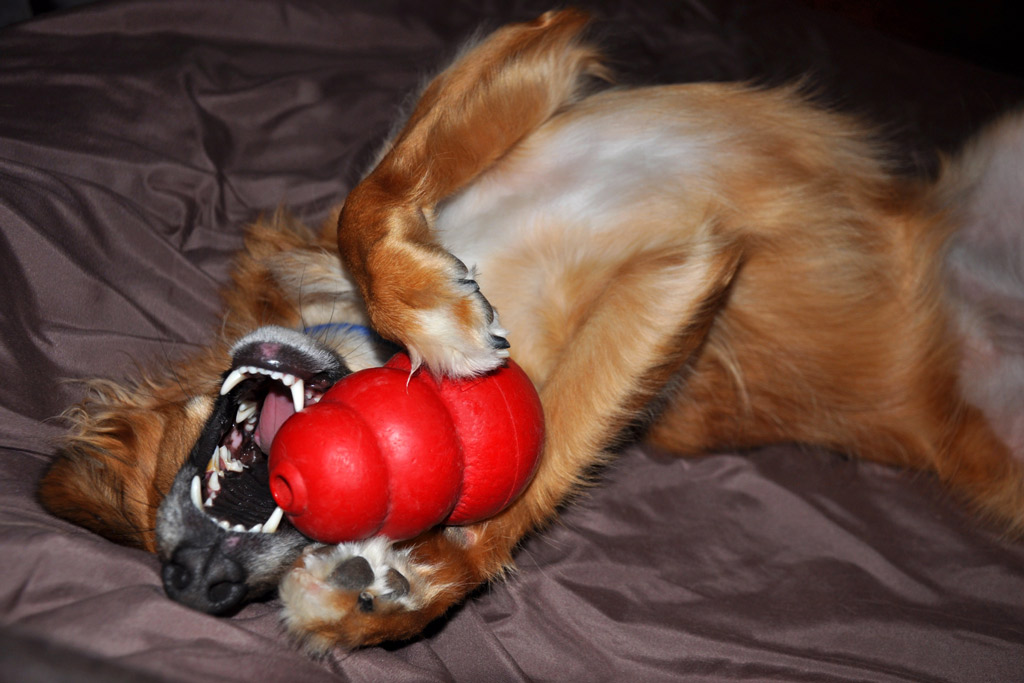
Problem Solving Accessories
There are other accessories that come in handy:
- A basket to store dog toys.
- A jar for treats.
- A dog food bin (Amazon link) to store kibble.
- A wall hook for your dog’s harness, leash and raincoat.
- A white noise machine (Amazon link) or ambient noise device for anxious dogs.
Head over to my Dog Safe Zone Kit list on Amazon to view my favourite options.
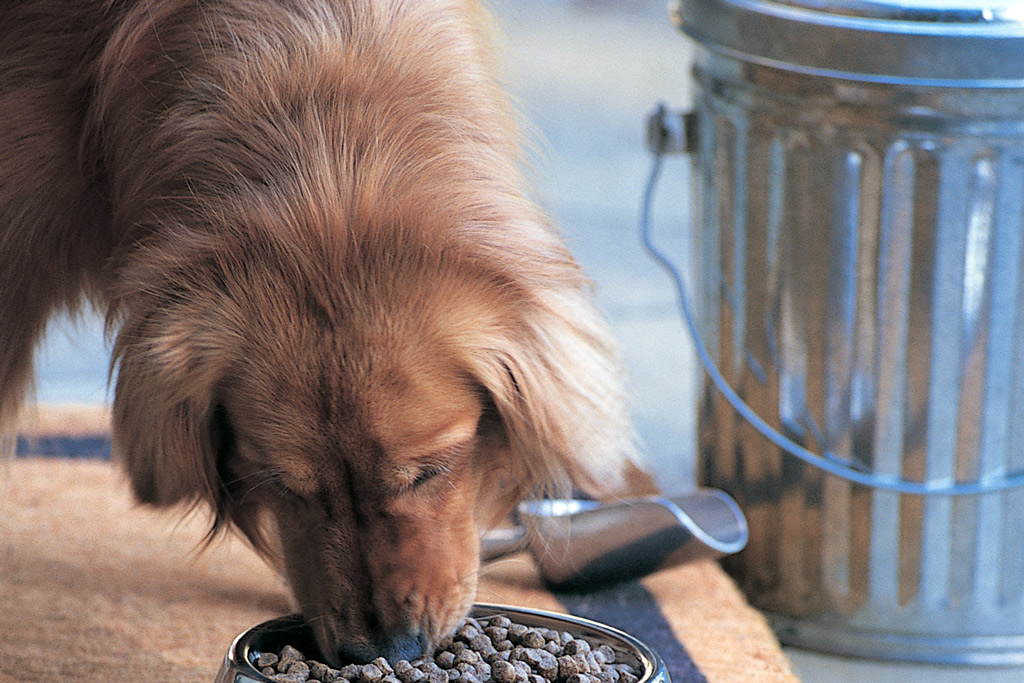
#4 – Introduce Your Pooch To Her Safe Haven
The first step in getting your pooch to use her new safe zone is to show it to her. Introducing the space to your pup will make her feel secure there with you and also you will give her the confidence to explore it by herself.
- Introduce the space by calling your pooch from the inside, inviting her to come in with you.
- If your dog leaves immediately, try again and include breaks in between.
- If your pup is reluctant to go in at the beginning, it’s okay to gently pick her up and place her there. Stay there a bit, petting her for a while.
- Reward your dog with cuddles or a high-value treat when she investigates her safe zone, and especially if she goes inside the crate by herself.
- Let your pup gradually acclimate to the new space. Make it appealing by placing treats and her favourite toys.
- Keep it always accessible to your pooch (crate door open, playpen door open, etc.) so she can go in and out as she pleases.
- If anxious, soothe her anxiety with lavender smells or relaxing sounds. For further tips on this, check out our how to calm your dog’s fears and anxiety blog post.

In preparing for the time when your dog should use her safe zone, like when you go to work or at bedtime, here’s what to consider:
- It’s better to introduce your puppy to her safe zone and for her get used to it before you intend to leave her home alone.
- You can gradually train your pup to get used to being in her space (doors closed and alone): at first for like 5 minutes, and then build up to 20 minutes. During the training, you should be at home, but not visible to your pooch.
- Try to encourage your pooch to go in of her own accord, giving her an interactive toy (for example) once she’s inside.
- Call your pooch and walk her to her zone. This helps to build a routine.
- Extend the amount of time your dog spends in her safe area leading up to the time when you’ll need to leave the home.
- Praise your pup’s good behaviour when you return. Remember that dogs shouldn’t be left alone for long hours. Check our How long can I leave my dog alone? blog post to get the answer!
Insider Tip: If your pooch only uses her space when alone or at night, she’s likely to develop a negative association towards her safe zone.
Also, avoid getting angry or being forceful with your pooch to get her where you want her to be. This will only discourage her from wanting to return to her space.
If you have multiple dogs, consider:
- Option 1: Create a private space for each dog. This will discourage them from invading one another’s zones.
- Option 2: Let them share if they are used to sleeping together without fighting.

Other Dog-Friendly Spaces
There are at least another two dog-friendly solutions to adapt your home to, for your pooch, and also keeping the mess at bay as much as possible.
#1 – Create a Mudroom Sanctuary
Instead of walking straight to the interior of the house when your doggy gets home full of mud, or simply wet, create an area where you can dry her off and wash down before she can enter the home.
If who have an entryway door or vestibule, convert the space between both doors into a room for your dog. Otherwise, just establishing a dog-friendly area at a hall entry or in a mudroom can prevent dirt from being tracked throughout your home.
As well, you can store her gear, towels, healthy treats and other essentials in a cupboard at this entrance to keep the area tidy.
You can use a storage shelf or basket to keep towels within arm’s reach when you need to dry fur. Then, add an attractive hook to give you a handy place to hang a leash.
Planning to install a dog door?
The hall entry is a great place to put it to restrict your dog from the rest of the house, while still providing free access to the outdoors.
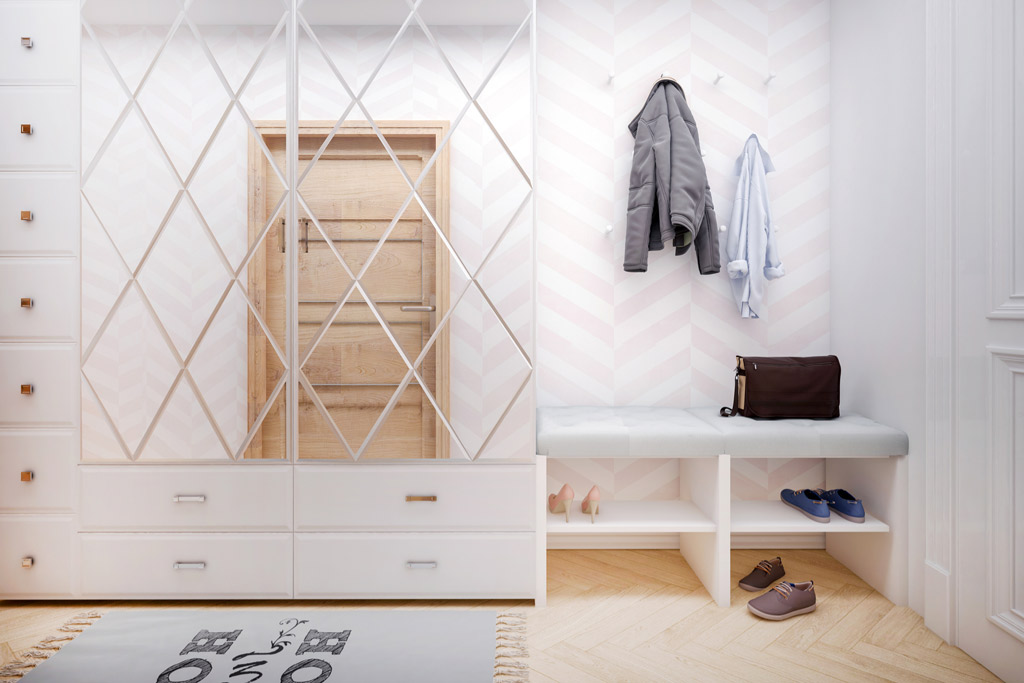
#2 – Garden Dog House
If you have a garden, consider the outdoors as an extension of your dog’s safe zone.
Regarding your dog’s safety, make sure that the fence is secure and high enough for your dog. Also, make sure your pooch has access back home at any point.
You might want to facilitate the access through a dog door or dog flap. Certain brands help in keeping your home energy-efficient.
If your doggy enjoys the outdoors so much, you can consider placing a permanent outdoors dog house (Amazon link) there too. However, don’t let your dog sleep outside at night, especially if she’s a house dog.
What next? Head on over to our Dog Care Pillars blog post for more tips about raising a happy and healthy dog!
